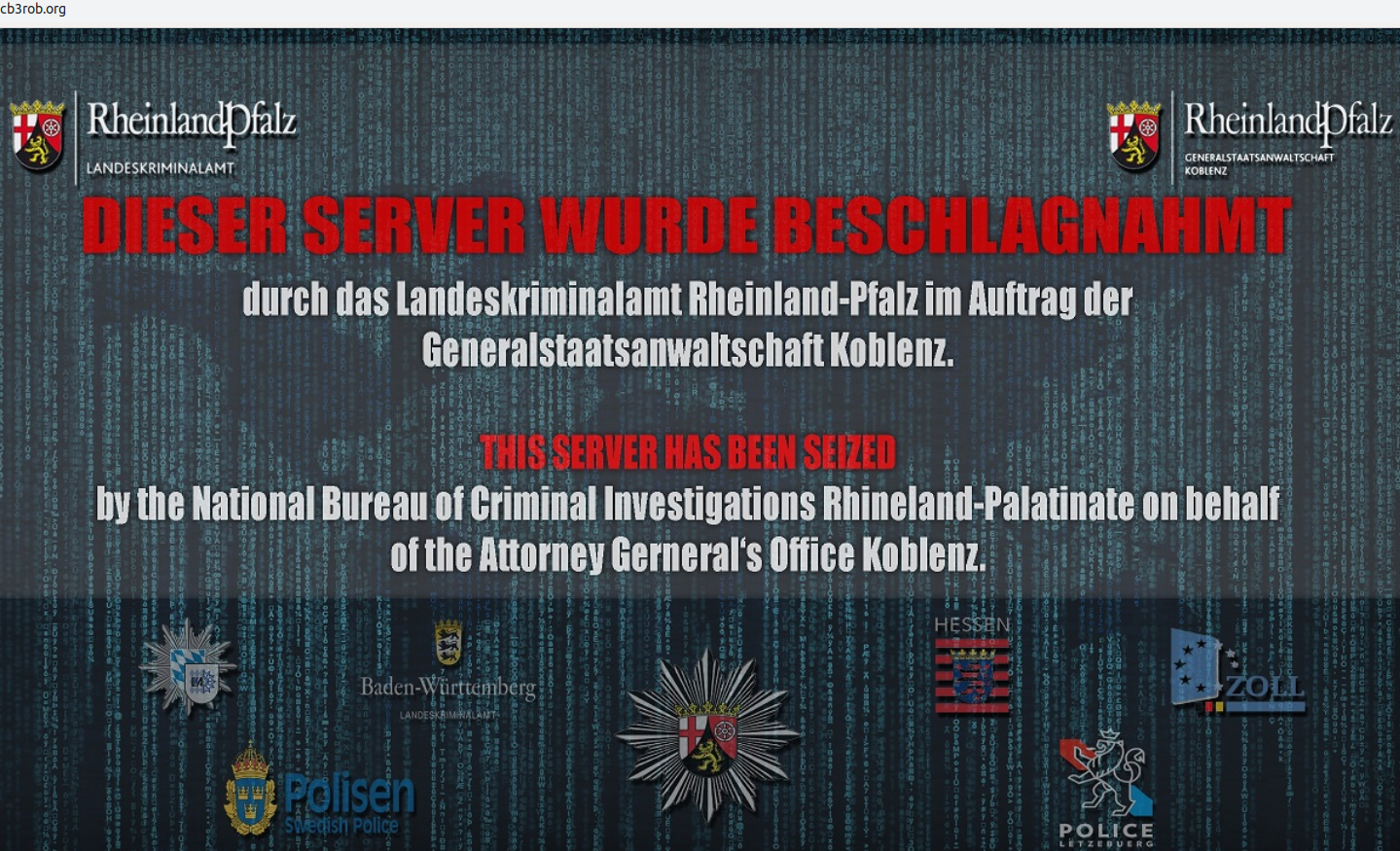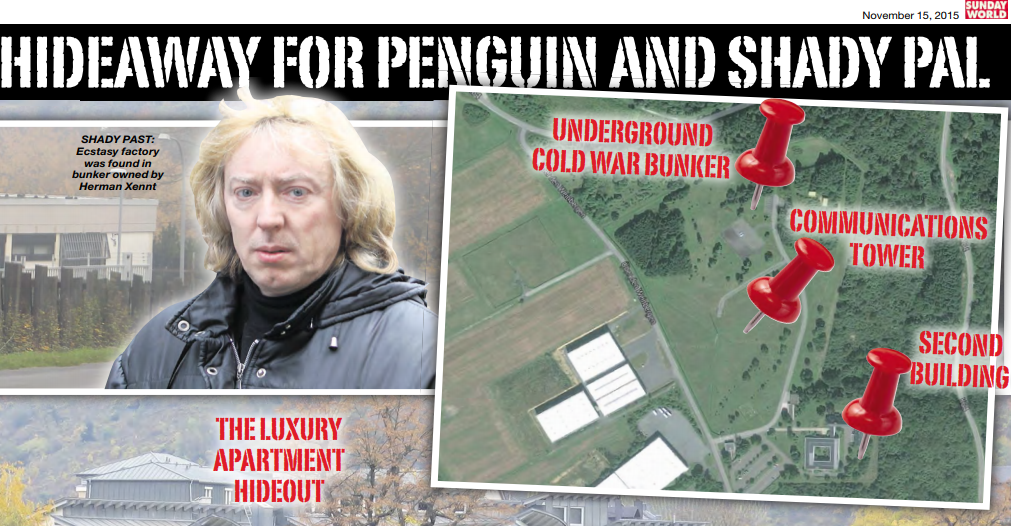Krebs - German Cops Raid “Cyberbunker 2.0,” Arrest 7 in Child Porn, Dark Web Market Sting
German authorities said Friday they’d arrested seven people and were investigating six more in connection with the raid of a Dark Web hosting operation that allegedly supported multiple child porn, cybercrime and drug markets with hundreds of servers buried inside a heavily fortified military bunker. Incredibly, for at least two of the men accused in the scheme, this was their second bunker-based hosting business that was raided by cops and shut down for courting and supporting illegal activity online.
The latest busted cybercrime bunker is in Traben-Trarbach, a town on the Mosel River in western Germany. The Associated Press says investigators believe the 13-acre former military facility served a number of dark web sites, including: the “Wall Street Market,” a sprawling, online bazaar for drugs, hacking tools and financial-theft wares before it was taken down earlier this year; the drug portal “Cannabis Road;” and the synthetic drug market “Orange Chemicals.”
German police reportedly seized $41 million worth of funds allegedly tied to these markets, and more than 200 servers that were operating throughout the underground temperature-controlled, ventilated and closely guarded facility.

The former military bunker in Germany that housed CyberBunker 2.0 and, according to authorities, plenty of very bad web sites.
The authorities in Germany haven’t named any of the people arrested or under investigation in connection with CyberBunker’s alleged activities, but said those arrested were apprehended outside of the bunker. Still, there are clues in the details released so far, and those clues have been corroborated by sources who know two of the key men allegedly involved.
We know the owner of the bunker hosting business has been described in media reports as a 59-year-old Dutchman who allegedly set it up as a “bulletproof” hosting provider that would provide Web site hosting to any business, no matter how illegal or unsavory.
We also know the German authorities seized at least two Web site domains in the raid, including the domain for ZYZTM Research in The Netherlands (zyztm[.]com), and cb3rob[.]org.

A “seizure” placeholder page left behind by German law enforcement agents after they seized cb3rob.org, an affiliate of the the CyberBunker bulletproof hosting facility owned by convicted Dutch cybercriminal Sven Kamphuis.
According to historic whois records maintained by Domaintools.com, Zyztm[.]com was originally registered to a Herman Johan Xennt in the Netherlands. Cb3rob[.]org was an organization hosted at CyberBunker registered to Sven Kamphuis, a self-described anarchist who was convicted several years ago for participating in a large-scale attack that briefly impaired the global Internet in some places.
Both 59-year-old Xennt and Mr. Kamphuis worked together on a previous bunker-based project — a bulletproof hosting business they sold as “CyberBunker” and ran out of a five-story military bunker in The Netherlands.
That’s according to Guido Blaauw, director of Disaster-Proof Solutions, a company that renovates and resells old military bunkers and underground shelters. Blaauw’s company bought the 12,500 square-meter Netherlands bunker from Mr. Xennt in 2011 for $700,000.

Guido Blaauw, in front of the original CyberBunker facility in the Netherlands, which he bought from Mr. Xennt in 2011. Image: Blaauw.
Media reports indicate that in 2002 a fire inside the CyberBunker 1.0 facility in The Netherlands summoned emergency responders, who discovered a lab hidden inside the bunker that was being used to produce the drug ecstasy/XTC.
Blaauw said nobody was ever charged for the drug lab, which was blamed on another tenant in the building. Blauuw said Xennt and others in 2003 were then denied a business license to continue operating in the bunker, and they were forced to resell servers from a different location — even though they bragged to clients for years to come about hosting their operations from an ultra-secure underground bunker.
“After the fire in 2002, there was never any data or servers stored in the bunker,” in The Netherlands, Blaauw recalled. “For 11 years they told everyone [the hosting servers where] in this ultra-secure bunker, but it was all in Amsterdam, and for 11 years they scammed all their clients.”

Firefighters investigating the source of a 2002 fire at the CyberBunker’s first military bunker in The Netherlands discovered a drug lab amid the Web servers. Image: Blaauw.
Blaauw said sometime between 2012 and 2013, Xennt purchased the bunker in Traben-Trarbach, Germany — a much more modern structure that was built in 1997. CyberBunker was reborn, and it began offering many of the same amenities and courted the same customers as CyberBunker 1.0 in The Netherlands.
“They’re known for hosting scammers, fraudsters, pedophiles, phishers, everyone,” Blaauw said. “That’s something they’ve done for ages and they’re known for it.”

The former Facebook profile picture of Sven Olaf Kamphuis, shown here standing in front of Cyberbunker 1.0 in The Netherlands.
About the time Xennt and company were settling into their new bunker in Germany, he and Kamphuis were engaged in a fairly lengthy and large series of distributed denial-of-service (DDoS) attacks aimed at sidelining a number of Web sites — particularly anti-spam organization Spamhaus. A chat record of that assault, detailed in my 2016 piece, Inside the Attack that Almost Broke the Internet, includes references to and quotes from both Xennt and Kamphuis.
Kamphuis was later arrested in Spain on the DDoS attack charges. He was convicted in The Netherlands and sentenced to time served, which was approximately 55 days of detention prior to his extradition to the United States.

Some of the 200 servers seized from CyberBunker 2.0, a “bulletproof” web hosting facility buried inside a German military bunker. Image: swr.de.
The AP story mentioned above quoted German prosecutor Juergen Bauer saying the 59-year-old main suspect in the case was believed to have links to organized crime.
A 2015 expose’ (PDF) by the Irish newspaper The Sunday World compared Mr. Xennt (pictured below) to a villain from a James Bond movie, and said he has been seen frequently associating with another man: an Irish mobster named George “the Penguin” Mitchell, listed by Europol as one of the top-20 drug traffickers in Europe and thought to be involved in smuggling heroin, cocaine and ecstasy.

Cyberbunkers 1.0 and 2.0 owner and operator Mr. Xennt, top left, has been compared to a “Bond villain.” Image: The Sunday World, July 26, 2015.
Blaauw said he doesn’t know whether Kamphuis was arrested or named in the investigation, but added that people who know him and can usually reach him have not heard from Kamphuis over several days.
Here’s what the CyberBunker in The Netherlands looked like back in the early aughts when Xennt still ran it:

Here’s what it looks like now after being renovated by Blaauw’s company and designed as a security operations center (SOC):

The former CyberBunker in the Netherlands, since redesigned as a security operations center by its current owner. Image: Blaauw.
I’m glad when truly bad guys doing bad stuff like facilitating child porn are taken down. The truth is, almost anyone trafficking in the kinds of commerce these guys courted also is building networks of money laundering business that become very tempting to use or lease out for other nefarious purposes, including human trafficking, and drug trafficking.
from Krebs on Security https://krebsonsecurity.com/2019/09/german-cops-raid-cyberbunker-2-0-arrest-7-in-child-porn-dark-web-market-sting/
Comments
Post a Comment